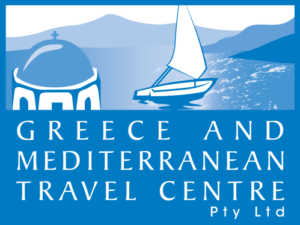Things to do
What to Do in Kusadasi
Pigeon Island (Güvercin Ada)
Connected to the mainland by a narrow causeway, the fortress on the island is thought to have been originally built by the Genoese who established a trading settlement here, known as Scala Nuova, in the 13th century. The fortifications were improved and extended by the Ottomans during the 15th - 19th centuries. On one side of Pigeon Island, there is a public beach and café that are managed by the municipality. Inside the historical walls, the inner castle is used as a small sea museum.
Dilek Peninsula National Park
With striking mountain scenery and rugged coastline views, the Dilek Peninsula is a national park area that makes an excellent day trip, 26 kilometres from Kusadasi. There are many beaches for swimming and sunbathing, including Aydinlik Beach and Karasu Köyü Beach. The Cave of Zeus (Zeus Magarasi) is a popular tourist attraction within the reserve, and there are excellent hiking trails.
Priene
Visit the Temple of Athena which crowns the highest point of the city atop Mount Mykale, together with a small Greek theatre featuring typical ‘armchair’-style seating. Don’t miss the square-shaped bouleuterion (Senate House), with its rather modest 640-tiered seating. Priene is 38 kilometres from Kusadasi.
Miletus
Miletus is famous as the home of ancient scholars, philosophers and scientists such as Miletus, who gave the alphabet to the classical world, and Thales, who calculated the precise time of the solar eclipse. Discover the remains of the Roman theatre and the baths of Faustina, among other Hellenistic and Roman remains at Miletus, 22 kilometres from Priene and 60 kilometres from Kusadasi.
Didyma
Admire the 6th century BC Temple of Apollo (Didymaion), once the largest building of its time and still mainly intact with columns towering more than 20 metres high. Didyma is 22 kilometres from Miletus and 82 kilometres from Kusadasi.
House of the Virgin Mary Meryemana
This small church built atop an ancient dwelling is believed by many to have been the place where Saint John took Mary, the mother of Jesus, following the crucifixion. Mass is celebrated here every morning. The surrounding national park is filled with natural springs said to cure all types of ailments and is oftern crowded with pilgrims. Meryemana is 25 kilometres north of Kusadasi, near Selcuk.
Selcuk
Ayasuluk Castle, locally known as Ayasuluk Kalesi or Selçuk Kalesi, lies on a hill in the town of Selçuk. There are also a few buildings from the late Seljuk Turkish period including türbes (saints’ tombs) and a small mosque.
St John’s Basilica
Explore the 15 towers and cisterns of the ancient fortress, then stroll through the marble courtyards and halls of the impressive Basilica of St John, on the slopes of Ayasuluk Hill just below the fortress. It was constructed by Justinian I in the 6th century and was modelled after the now lost Church of the Holy Apostles in Constantinople. The basilica was built atop the 2nd century tomb believed to have once held the body of St John the Evangelist.
Sirince
Şirince is a beautiful hill town 8 kilometres east of Selçuk near Ephesus, in the Aegean hinterland. It is famous for its olive oil, wine and many local and organic products, including vinegar, honey, soap, and traditional sweeteners pekmez made from a variety of fruits. Also produced in Sirince is Nar ekşisi, a tasty vinegar substitute made from pomegranate juice. Atmospheric boutique hotels and a dozen small restaurants cater to visitors.
Ephesus Archaeological Site
The ancient city of Ephesus, 20 kilometres north of Kusadasi, was a large city from classical Greece to the Roman Empire, when it was the Mediterranean’s main commercial centre, to the rise of Christianity. Ephesus contains numerous marble monuments, an impressive theatre, the largest in Anatolia, and the Temple of Artemis, one of the Seven Wonders of the Ancient World. Destined by the silting of its harbour in 6th century, the city of Ephesus relocated to what is now known as Selcuk.
Stroll marble-paved avenues that lead to remarkably well-preserved ruins and partially reconstructed buildings. View grooves on the ground made by chariot wheels and admire the amazing collection of Roman ruins, including a 1st century AD stadium, where gladiators fought beasts in combat before 70,000 spectators, and a 25,000-seat 2nd century AD theatre lined with rows of curved bench seats that are still used annually during the music and dance performances of the Selçuk Ephesus Festival in May.
Marvel at the stunning two-storey Library of Celsus, with the rolls of papyrus in its ancient reading room. View the slender marble columns on the Arcadian Way, admire the Corinthian columns and serpent-headed hydra on the facade of the Temple of Hadrian and the collapsed row of columns that once supported the vast Temple of Domitian. Visit the Upper Agora (market), the Magnesian Gate and the Odeon, where spectators once listened to poetry readings and music.
Plan on at least four hours for a casual stroll through this immense site and add additional time for a comprehensive visit to all the sites.
Temple of Artemis (Artemision)
One of the Seven Wonders of the World in ancient times, the Temple of Artemis at Ephesus was a place of pilgrimage for centuries. Unfortunately little remains of the vast, rich marble temple, only a few pieces of marble column favoured by the storks who arrive in the nearby town of Selçuk each spring. The most beautiful remains of this temple are today exhibited in London’s British Museum.
Belevi Monumental Tomb
15 kilometres northeast of Selçuk and dating from the 3rd century BC, this monumental tomb is the second-largest in Anatolia. It was intended to be the burial tomb of Lysimachus, king of the region after the death of Alexander the Great, however Lysimachus was then buried elsewhere. Instead, Laodice I, the wife of King Antiochus II Theos of the Hellenistic Seleucid Empire, had her husband buried here after she had him poisoned.
